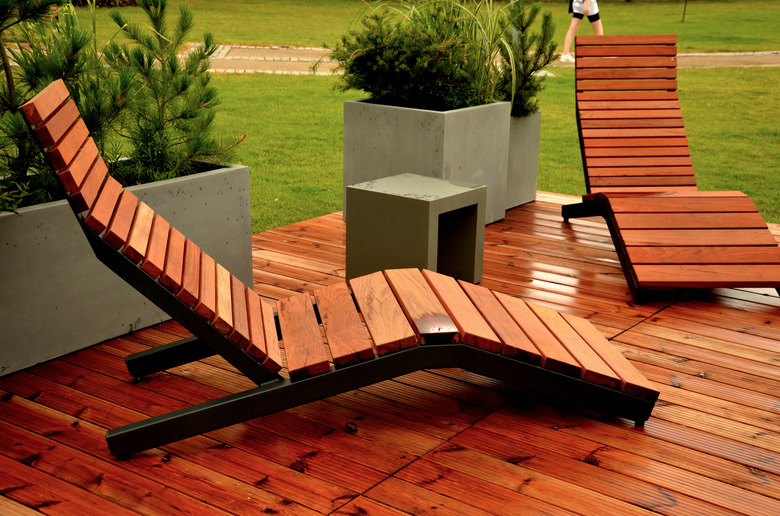How To Fix Water-Damaged Wood Furniture
We may receive a commission on purchases made from links.
Water damage on wood furniture might not be as bad as it seems. Fairly recent marks, such as white rings or white splotches on a tabletop, are easily remedied with heat or with any one of a number of household oils. A mild case of mildew spots from water exposure may be cleaned up with vinegar.
Here's how to fix water-damaged wood furniture.
Fix the Damage With Heat
Fix the Damage With Heat
A thick, strong finish on wood furniture usually prevents water damage, but as that finish wears and ages, its protective ability wears out too. Water damage that hasn't completely harmed the wood yet usually shows up as white or light discoloration on the surface, but in some cases, the spot may look a little darker than the finish. This type of damage is often only finish-deep, and drying out the finish removes all evidence of the damage.
Heat is the best way to speed up the drying-out process on the furniture's surface. Blow a hair dryer on a medium or high heat setting over the affected area, holding it 5 or so inches away and moving it a little from time to time. There isn't an exact distance to hold the hair dryer from the water damage; the key is to just observe the spot and notice whether it fades at all within five to 10 minutes as you blow the hair dryer over it.
Warning
While a heat gun provides considerably more heat than a hair dryer, it's best not to use one, as they're hot enough to actually burn the wood.
A clothes iron is another way to heat up the finish enough to remove the water damage from the wood furniture. Set some brown craft paper or a lint-free cotton cloth, such as a tea towel, over the damage and then iron it on low to medium heat without steam for several seconds. Lift the paper or cloth to see if the stain vanished; if not, set the material back down and iron it again.
Try an Oily Surface Treatment
Try an Oily Surface Treatment
If you'd rather try something faster than a heat treatment, grab an oily kitchen product instead. Rub mayonnaise or any unflavored cooking oil directly on the spot with a white lint-free cloth. If the spot remains, cover the area with mayonnaise or cooking oil and let it sit for several hours or overnight before buffing it off with the lint-free cloth.
Other oily household substances also work, such as petroleum jelly or coconut oil. Whatever you choose, ensure it doesn't have any colorants or flavorings added, as these might either stain the surface or add their scent to the furniture.
Deal With Mildew
Deal With Mildew
If the furniture was left in a damp environment after being exposed to water, mildew might be on the surface. Mix equal portions of white vinegar and water in a spray bottle, lightly mist all of the wood, and then wipe away the moisture after a minute or two. If the furniture is large, such as an armoire, work on one manageable area of the piece at a time. If mildew remains, apply pure vinegar to the spot, let it sit for a few minutes, and then wipe it away.
For furniture that's been through a flood or has been left outdoors for so long that the finish has been compromised, refinishing might be the best option. Cleaning, sanding, and painting the piece is one fairly easy way to refresh a piece that has severe finish issues but is otherwise in good shape.
